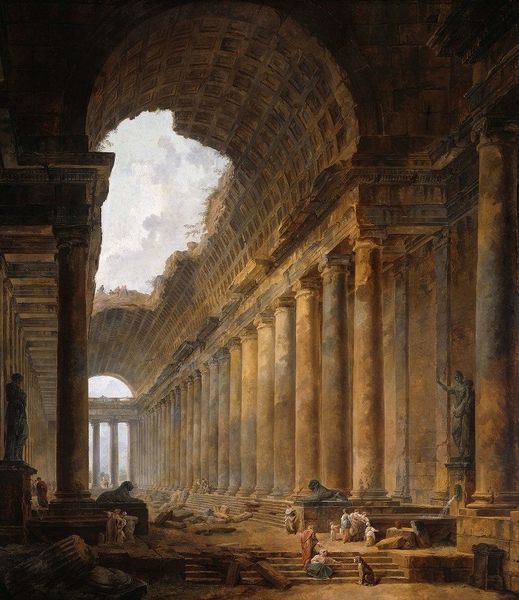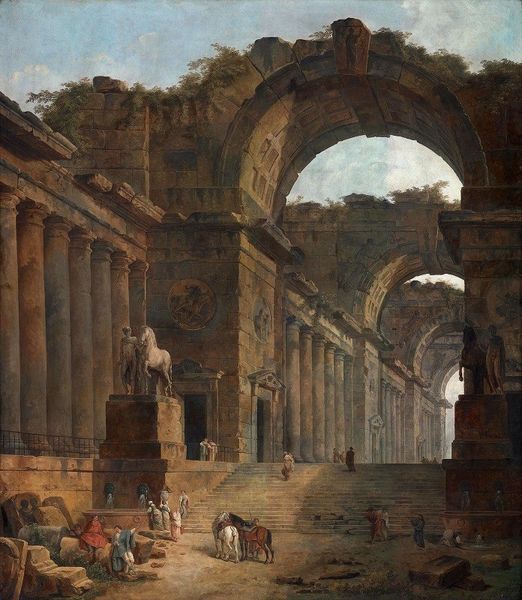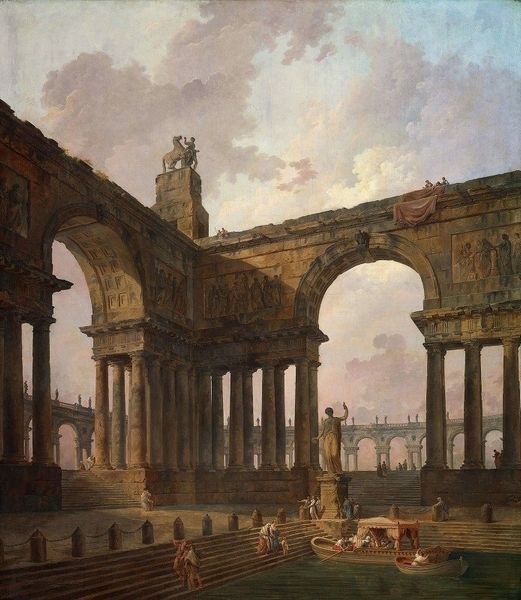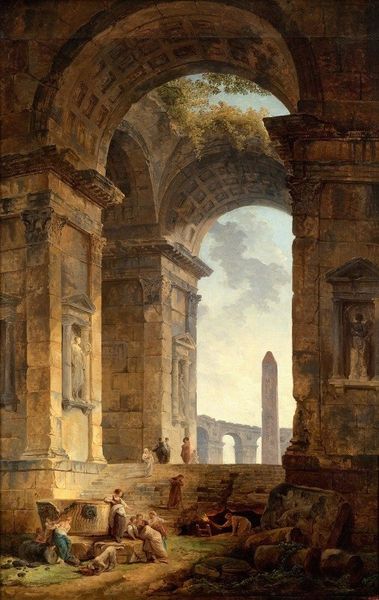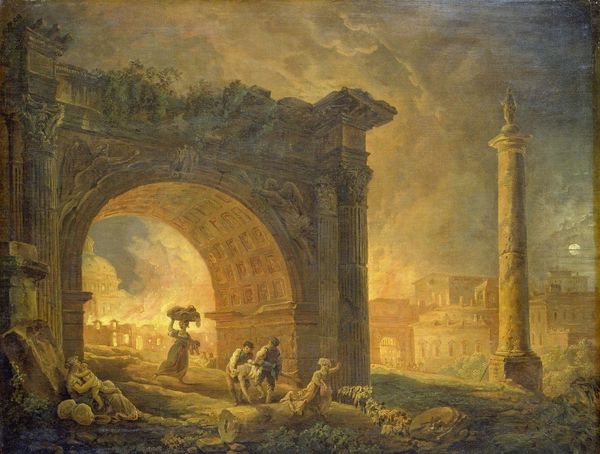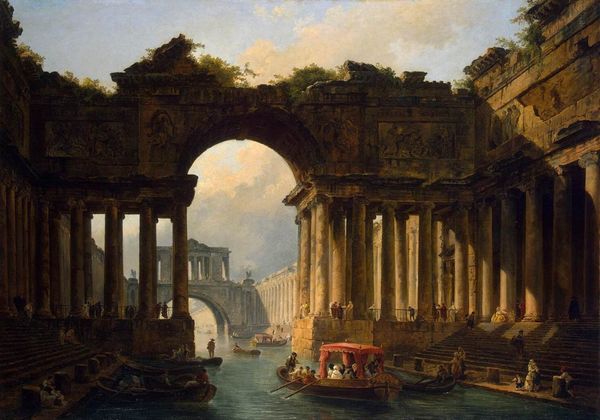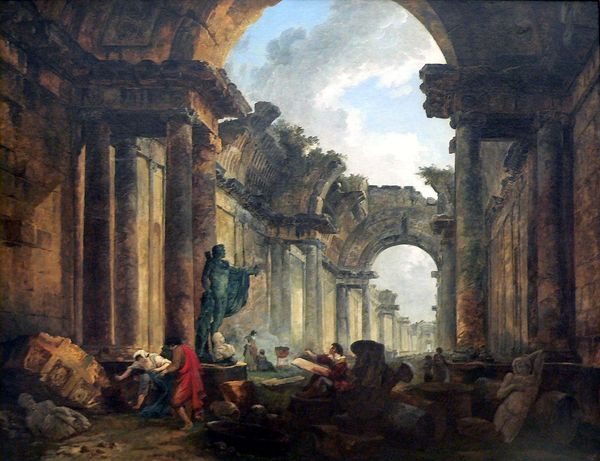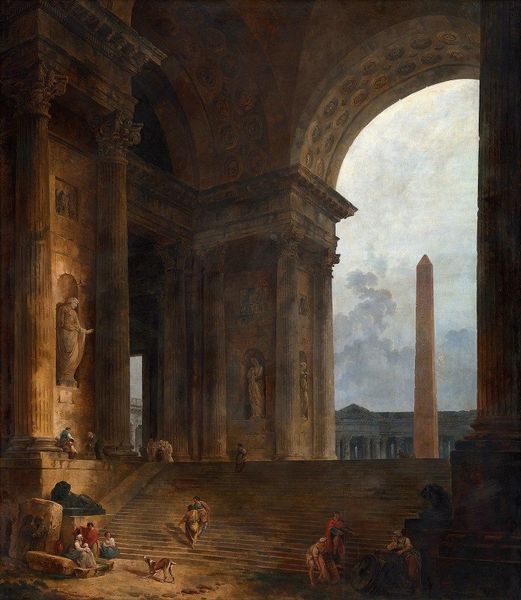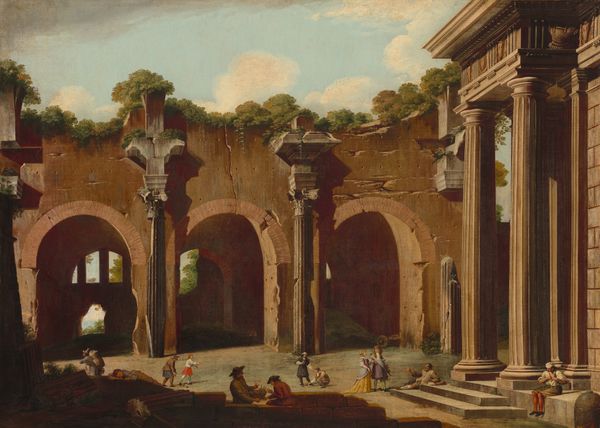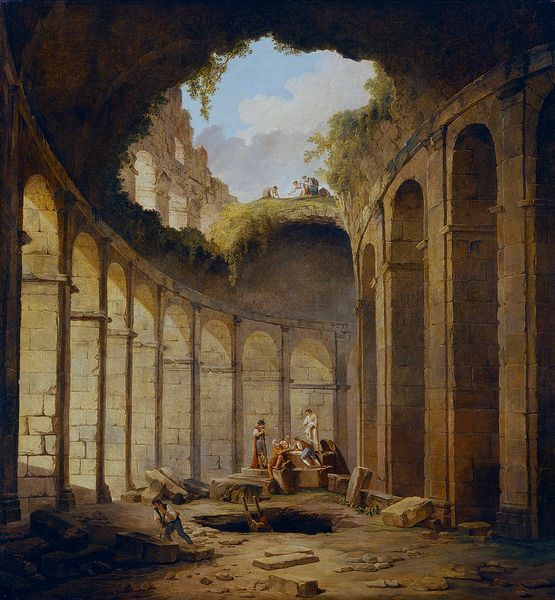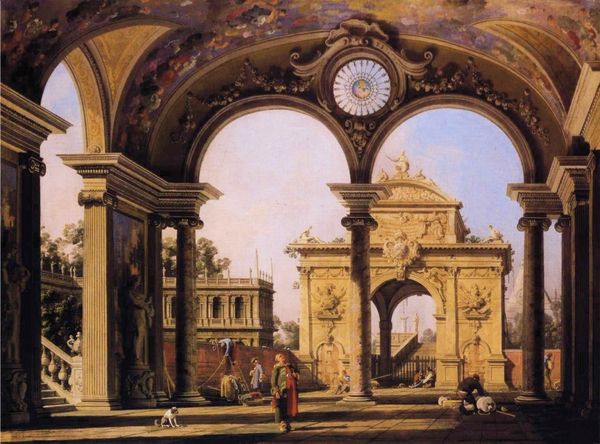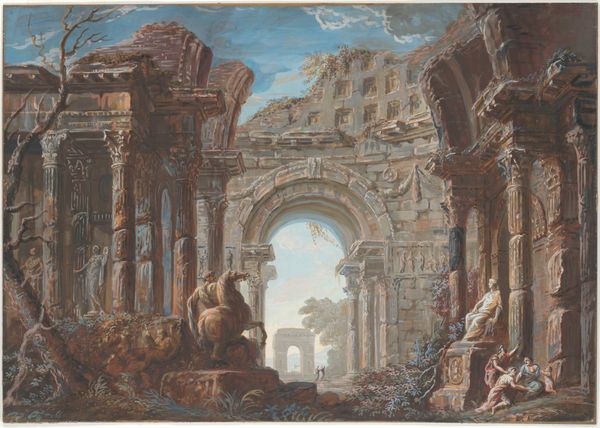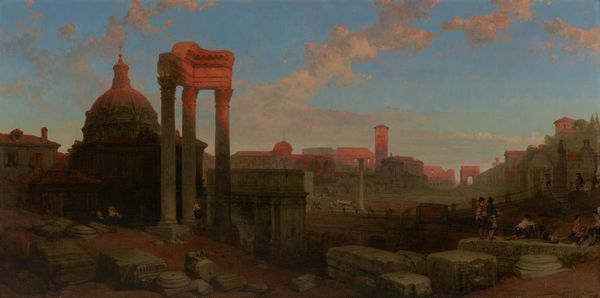
painting, oil-paint, architecture
#
neoclacissism
#
painting
#
oil-paint
#
landscape
#
oil painting
#
column
#
romanticism
#
arch
#
genre-painting
#
history-painting
#
architecture
Copyright: Public domain
Editor: This oil painting by Hubert Robert is called "Ancient Ruins Used as Public Baths." It depicts exactly what the title says – people bathing and relaxing amongst crumbling classical architecture. I’m struck by the contrast between the grandeur of the ruins and the everyday casualness of the figures. What draws your eye when you look at this piece? Curator: I notice how Robert is participating in the 18th-century fascination with ruins, especially Roman ruins. But he's not simply documenting them. Instead, he is showing how these once powerful, meaningful structures are being repurposed and reintegrated into public life, though perhaps in a diminished capacity. Consider how this image promotes the political agenda and power structures of the era. Editor: Political agenda? I hadn’t thought of it that way. Curator: Absolutely. The display of classical ruins carries the symbolic weight of history and civilization. In Robert's time, there was great debate about civic virtue and the role of the state, therefore this scene might romanticize a sort of harmonious integration of the past within contemporary society to establish legitimacy to these concepts. The bathing figures, seemingly unaware of the history surrounding them, represent how contemporary life reshapes the ancient past according to social needs. What else strikes you about their arrangement and interactions within the ruins? Editor: They seem oblivious, but also content! Almost like they’ve democratized these spaces in their everyday enjoyment. Curator: Exactly! The scene speaks to larger questions around power and public access. The image encourages you to contemplate on what historical monuments *should* mean, and whom *should* they serve, which speaks directly to the artistic and political discussions of that era. Editor: I now view the painting less as a pretty picture, and more as a lens for viewing shifts in power and meaning. Thank you! Curator: My pleasure! Thinking about the function and the cultural context is always very helpful when appreciating works of art.
Comments
No comments
Be the first to comment and join the conversation on the ultimate creative platform.
